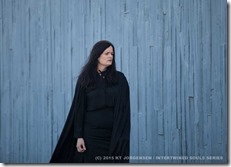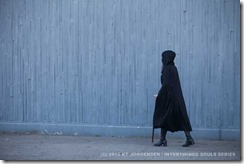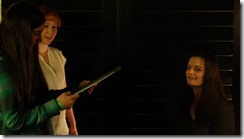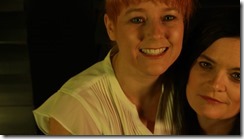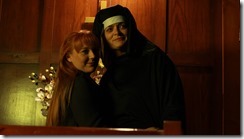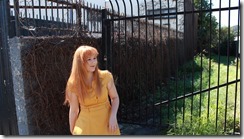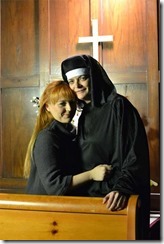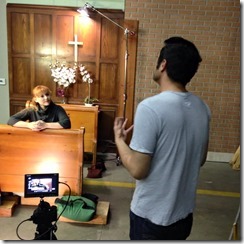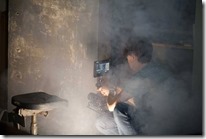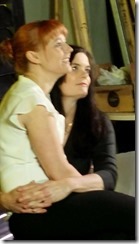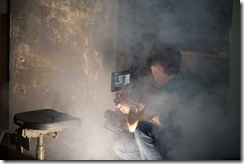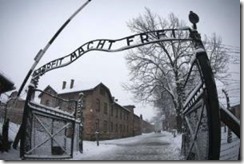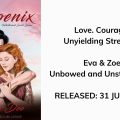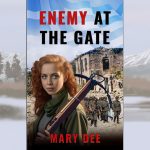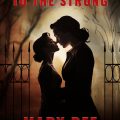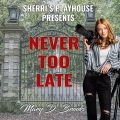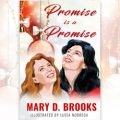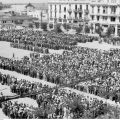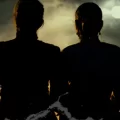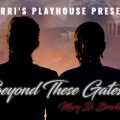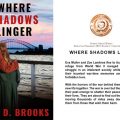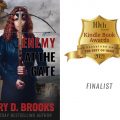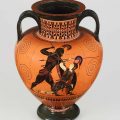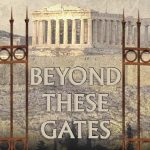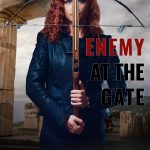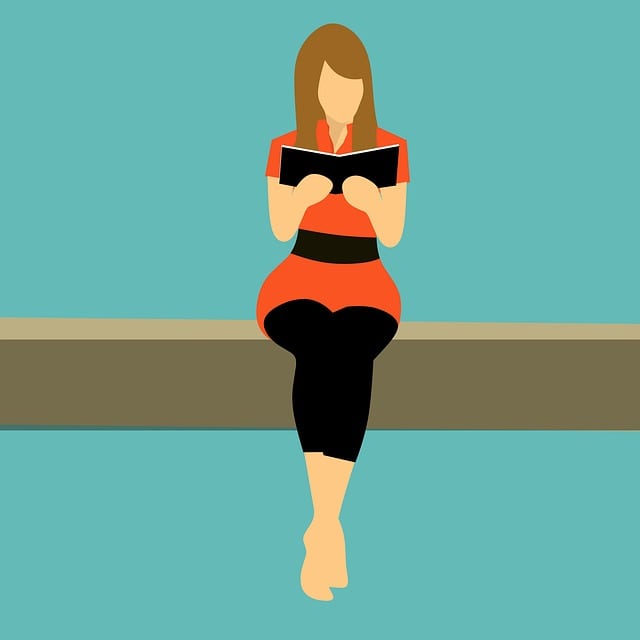Mar 5, 2015
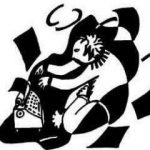
ANNOUNCEMENT:
I would like to announce that the relationship between myself and Bedazzled Ink Publishing Company was terminated through mutual agreement today.
I’m working on something new and will have some surprises for you very soon.
All the books will be available again shortly (in print and e-book form).
Thank you, and sorry for the inconvenience.
Mar 1, 2015
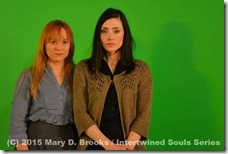 I’m thrilled to announce that Adrienne Wilkinson has filmed a role for Intertwined Souls Series (my book series) as Helena Lambros, Zoe’s mother.
I’m thrilled to announce that Adrienne Wilkinson has filmed a role for Intertwined Souls Series (my book series) as Helena Lambros, Zoe’s mother.
The dynamic duo – Penny Cavanaugh (Zoe Lambros) and Adrienne Wilkinson (Helena Lambros). Watching this from behind the camera, I had the widest smile ever because they were working so well together. My face hurt from smiling so much. I was so proud of Penny – Adrienne is such an awesome actress and Penny was acting her heart out. I really can’t wait for you guys to see this. This is the only hint of Adrienne’s role you will get! Enjoy!
You can find out more about the Intertwined Souls Series at http://www.nextchapter.net
Feb 12, 2015

The Intertwined Souls series is devoted to the lives of Eva and Zoe – I wanted to explore two totally different characters from a different angle. Eva’s backstory is very emotional and one of the questions I get from readers is about the aversion therapy Eva is forced to endure because of her lesbianism.
Eva’s descent into mental anguish begins on an infamous day in German history – Kristallnacht – the Night of Broken Glass. Kristallnacht was a series of coordinated deadly attacks) against Jews throughout Nazi Germany and Austria on 9–10 November 1938, carried out by SA paramilitary forces and non-Jewish civilians. German authorities looked on without intervening. The name Kristallnacht comes from the shards of broken glass that littered the streets after Jewish-owned stores, buildings, and synagogues had their windows smashed.
We first meet Eva in 1942 in a small Greek town of Larissa where we see the physical and mental limitations this has wrought on her.
Eva is not Jewish and took part in Kristallnacht – she was a member of the Hitler Youth as most children were during the Nazi era. Eva is horrified by what she is seeing and runs back home but that is where her problems begin. Her mother has been killed on the belief she was a Jewess and her father, Major Hans Muller, is distraught. He is also informed that his daughter was out, against his orders, with her friends and with her lesbian lover. He is enraged Eva would bring shame to the Muller name – a well respected, wealthy family in Germany – that he beats her. She’s barely alive when Muller’s brother Dr Dieter Muller tells him of a treatment he is working on to ‘cure’ homosexuals of their deviancy. From this moment forward, Eva’s life descends into a world of pain.
I have spoken to psychologists, to people who have undergone this “treatment” and have done extensive research into it. I can’t begin to tell you how horrified I was when I first read about it.
In the novel “In the Blood of the Greeks” we find out that Eva had undergone electroshock therapy and aversion therapy years before she arrived in Greece (where the novel begins) to “cure” her of her lesbianism. The “cure” consists of electroshock therapy and aversion therapy; a truly barbaric way to change someone’s nature. It does work, in the sense, it causes them extreme pain when they are aroused yet it doesn’t change who they are. You can’t change someone from homosexual to heterosexual no matter how much you torture them but you can train them that if they have those thoughts then the end result will be extreme pain. Eva does find a way out of this hell but it takes years of therapy. (Where Shadows Linger)
I chose to highlight (if that is the right word to use) this in the Intertwined Souls series. How someone can undergo this treatment and still be able to function is one of the things that intrigued me.
- What kind of problems do they have in dealing with their memories?
- What physical problems arise?
- How do they cope emotionally?
- Can they be in a healthy relationship?
- How long does it take for them to be able to function normally?
Unfortunately this “therapy” is still being used today.
I received this email (and with Blaire’s permission) I’m posting it because it has moved beyond words. A writer writes to tell a good story and along the way, if/when a reader is moved by that story, we don’t usually know it unless we (the writer) is told. When I received this email, I was overcome with emotion.
Please take a moment and have a read of Blaire’s email (posted with her permission)
Reading this series has been such an experience for me. I’m 29 now. I started reading this series when I was about 16. It started with Out of Darkness.
As you have expanded the details through the release of later editions, you have been able to capture what it was to not only be in a war torn country but to be lesbian women in that time period. One of which underwent torture to cure her “illness”. You have been able to somehow step into those shoes. And let the readers experience a sliver of what so many on this earth have gone through. Be it straight, gay, Christian, Jewish. It doesn’t matter. You have captured every character you have written with integrity.
I have been able to relate to your characters. Especially Eva. Your books have helped me heal in a way. The struggles she went through and continues to go through and her ability to overcome them have helped me in overcoming my own obstacles. You have been able to capture those struggles as they would have occurred. Almost exactly.
I essentially grew up with this series. And I am so excited to see what adventures await Stella and Tessa. And to see where life takes Eva and Zoe as they continue their journey. Thank you for continuing to write about these characters I have come to love.
Blaire
Please read: Gay Conversion Therapy: An Interesting Article in Psychology Today for more insights into this
Wiki states:
1920s psychoanalysts assumed that homosexuality was pathological and that attempts to treat it were appropriate, although psychoanalytic opinion about changing homosexuality was largely pessimistic. Those forms of homosexuality that were considered perversions were usually held to be uncurable. Psychoanalysts‘ tolerant statements about homosexuality arose from recognition of the difficulty of achieving change. Beginning in the 1930s and continuing for roughly twenty years, major changes occurred in how psychoanalysts viewed homosexuality, which involved a shift in the rhetoric of psychoanalysts, some of whom felt free to ridicule and abuse their gay patients
What is Conversion Therepy?
Conversion therapy (also known as reparative therapy) is a range of treatments that aim to change sexual orientation from homosexual to heterosexual. Such treatments have been criticized for being pseudo-scientific.
Conversion therapy has been a source of controversy in the United States and other countries.[6] The American Psychiatric Association has condemned “psychiatric treatment, such as reparative or conversion therapy which is based upon the assumption that homosexuality per se is a mental disorder or based upon the a priori assumption that the patient should change his/her sexual homosexual orientation.”[7] It states that, “Ethical practitioners refrain from attempts to change individuals’ sexual orientation.”[8] It also states that political and moral debates over the integration of gays and lesbians into the mainstream of American society have obscured scientific data about changing sexual orientation “by calling into question the motives and even the character of individuals on both sides of the issue.”[7]
If you wish to read more, here are some links although researching this topic.
Jul 14, 2014
Here’s an old interview I gave for MediaBlvd Magazine from May 2006.
INTERVIEW FROM MEDIABLVD MAGAZINE
22 May 2006
Intertwined Souls: An Interview with Author Mary D. Brooks
By Kenn Gold
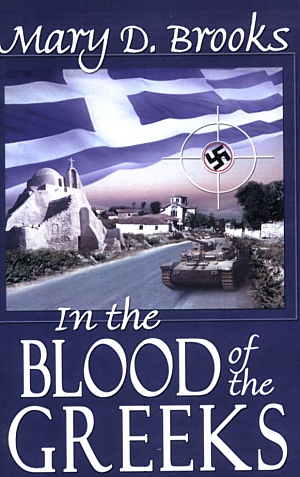 Set against the historical backdrop of a German occupied village in World War II Greece, Mary D. Brooks’ novel, In the Blood of the Greeks, is a love story. It is the tale of two women, seemingly from very different worlds, finding each other and themselves as everything is falling apart around them.
Set against the historical backdrop of a German occupied village in World War II Greece, Mary D. Brooks’ novel, In the Blood of the Greeks, is a love story. It is the tale of two women, seemingly from very different worlds, finding each other and themselves as everything is falling apart around them.
Sixteen-year-old Zoe Lambros is from the village of Larissa, and has seen most of her family die at the hands of the Germans. Eva Muller is the daughter of the major in command of the occupying force. In the first chapter of the book, Major Muller shoots Zoe’s mother in front of her. As Zoe is holding her dying mother in her arms, she thinks she hears Eva laughing; this causes Zoe to despise Eva, and even to plot to kill her. Later, Zoe takes a job as Eva’s maid and plans her revenge, but things are not at all as they seem, and the two women find unexpected love in extraordinary circumstances. The book is the first in the series called Intertwined Souls.
Brooks, an extraordinarily likable and outgoing person, is a woman of many talents. In her spare time, she is the webmaster of the largest and arguably best-known fan web site (ausxip.com) for the television show, Xena- Warrior Princess, and its star, Lucy Lawless. The website is a shrine to the entire Xenaverse, and to all of the various other projects that Lawless has been involved in, including her role as a Cylon agent on Battlestar Galactica.
Though Brooks has written several books about the lesbian couple, Eva and Zoe, she is heterosexual. She laughs at the question as to how a straight woman can possibly write a realistic portrayal of a gay couple and their relationship. “I don’t think we set out to choose the characters but the characters choose us,” she says. “I don’t really know why. I can’t tell you where those characters came from but they just did, and they just happened to be lesbians. The fact that I’m a straight woman shouldn’t even be a factor. Storytellers are there to tell the story. The story and not the storyteller is the important part.”
Brooks is of Greek ancestry and has long had an interest in the stories of the unsung heroes who suffered through the war. “I have a Greek background and that time period fascinated me,” she says. “I’ve had a special place in my heart for people who had gone through the horrors of the war. When I was 16 years old I read a book called Rosemarie, which was about a fiction account of a teenager growing up in that time-period, and also going through the concentration camp. Followed that up with the real story “Anne Frank’s Diary”, which horrified me. I realized that many people suffered but we didn’t know their names. Also there were many that tried to save people from the Nazis; the priests, the nuns, ordinary people who did extraordinary things.”
“There were heroes whose deeds went unnoticed by history but they shaped the lives of many people. So I wanted to write a story that brought those elements together – the time frame of the war and beyond, and to bring those unsung heroes to the surface. The more I researched the more horror stories I read – and I figured if one of those characters have gone through the horrors then it would be an interesting storyline, to see how they would react, how they would survive mentally and physically when faced with other obstacles. Would they just shut off emotionally or would they want to move forward – try to live their lives the best way they can? Would they regret the hand that life dealt? Greece’s part in the war wasn’t well known so I set it there, researched it, and brought it into the story.”
The horrors of what both women had gone through, which are touched on in the first novel will be explored in the following novels in the series. Both women are survivors in their own way.
Locations and actual events in the book were researched quite extensively. Brooks says “Some of the events depicted in the novel “In the Blood of the Greeks” were very real; such as the treatment of the Greeks by the Germans, the repercussions of the Greek Resistance against their occupiers, the blowing up of the bridge, etc. Athanasios Klaras was head of the communist resistance group that was around Larissa at the time. I just took liberties with the characters like Klaras to weave them into Eva and Zoe’s lives.”
Eva and Zoe first appeared in 2001 and were published that year by another publishing company. Since then Brooks has worked on more of the storyline and has a new publisher, Cavalier Press. The next book that will be released this month is called “Where Shadows Linger”.
The year is 1948. After fleeing Nazi-occupied Greece, Eva Muller and Zoe Lambros are still very much in love, wanting nothing more than to fulfill their dreams and hopes for the future. Emigrating to Sydney, Australia, the two women find themselves making new friends and forging a new life together. However, it is not long before their happiness is marred by prejudice, and the machinations of old enemies that plunge them into mortal danger. Will their unique connection be destroyed? Will they lose their new-found friends? Or will Eva and Zoe’s love prove strong enough to overcome the shadows of the past that continue to linger in their lives?
It takes Brooks between three to six months to write a novel. “I try and write it the same way life happens – it evolves. Sometimes an idea would morph into something else that I hadn’t thought of and I go with the flow. Sometimes the characters take me places I hadn’t thought about. It takes on a life of its own,” she adds.
Brooks has received encouraging feedback about her novels, and her fans are both male and female. “I had feedback from one woman who told me that her grandmother suffered during the war and this gave the granddaughter an insight. The story may not have been the same but the impact was. I have had people tell me that they loved the fact that Eva never gave up. The audience is mixed – I’ve had men write to me to tell me they like the stories as well as women, but I suspect there are more women than men.” Unfortunately, she will not be doing a book tour for Where Shadows Linger, but hopes to do one for the third book in the series.
Brooks plans to finish the Intertwined Souls series, and then has other characters in mind that she may explore. “At the moment Eva and Zoe are keeping my head busy but I do have other characters that I would like to explore, but their turn will come when I’m done with the story of Eva and Zoe. I have plans on releasing three more books – Where Shadows Linger is the next one, and another two that will round out the story of the women, and will come full circle.”
You can check out Mary D. Brook’s Official website at http://www.nextchapter.net/
—
Interview originally published at
http://www.mediablvd.com/magazine/Magazine-Home/MBMag_20060420159.html (now via the Internet Archive)



